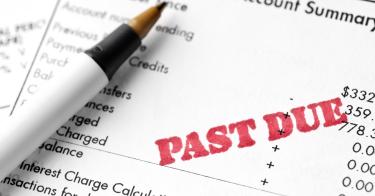Amid the decline in real wages under Bidenomics, families continue to struggle. But instead of pursuing real solutions, Congress is now considering a cap on credit card rates—a form of price control that will simply deny needed financing to American households.
Surging prices under President Biden have forced many families to completely drain their savings and even to take on part-time second jobs to deal with the plunge in purchasing power. Increasingly, families rely on cash-out refis and other debt just to make ends’ meet. Credit card balances reflect this harsh reality. They reached a record $1 trillion this summer.
Family credit card balances have increased, on average, more than $3,000 over the last two years. Credit card delinquency rates have nearly doubled since 2021. This coincides with a spike in credit card interest rates, which rose from an average of less than 15 percent to almost 21 percent in less than two years.
No wonder bankruptcy filings look to notch their first annual increase since 2011.The toxic recipe of higher balances and higher interest rates results in interest payments on the typical family’s revolving debt of close to $2,500 annually, compared to just $1,300 in 2021.
>>> American Taxpayers Are Now Slaves to Interest Payments
Unfortunately, a recent proposal to cap credit card interest rates will inadvertently deny temporary financial resources to families dealing with price hikes that outpace pay increases. Expect more defaults, bankruptcies, ruined credit histories, and reliance on disreputable black-market lenders—that is, loan sharks—as government moves to dry up the supply of credit.
Price controls on capital—or any other good or service—ultimately result in shortages. They limit supply while stoking demand. Just as a minimum wage price floor hits lower-skilled and less-experienced workers the hardest, by shrinking the number of jobs offered to this set of workers, so interest rate price caps are hardest on the intended beneficiaries—lower-income and poorer-credit borrowers.
Data from 2021 showed an overall credit card interest rate of just over 15 percent, ranging from approximately 12 percent for superprime to 17 percent for prime, to 19 percent for near prime, and 20 percent for subprime (580-619 FICO score). Given the overall rate increase of 5 percent since then, an 18 percent cap will price nearly four of every five subprime borrowers out of the market, and many prime borrowers as well. Expect denial rates to climb even higher.
Even in 2020, lenders approved new lines of credit for fewer than half of prime borrowers, only two of every five near-prime borrowers, and only one of every five subprime/deep subprime borrowers. This extended a steady longer-term decline.
Don’t think for a second that banks can simply absorb the impact by shrinking their profit margin on credit card lending. Contrary to conventional wisdom, the return on credit card assets (loans extended) in recent years averaged well under 2 percent. Capping credit card interest rates at 18 percent would wipe out nearly the entirety of the profit margin for loans to most families by placing the price CAP under the approximate 19% COST of delivering this credit.
Importantly, the cost to a bank of a credit loan reflects the risk of loss. The price—the interest rate—to the consumer reflects this individualized risk. Capping the price does nothing to diminish the cost of the credit provided. When that price fails to exceed the cost, the supplier—the bank—will simply refuse to provide the product.
>>> All I Want for Christmas Is a 2% Interest Rate
A government-mandated interest rate cap presents a dilemma to lenders: Either extend credit at a rate that doesn’t include all the default risk, or deny credit to a large swath of potential borrowers.
The disaster of the savings and loan crisis of the 1980s taught banks an important lesson. Government-mandated mortgage interest rate caps ultimately led to a financial meltdown as lower-credit borrowers defaulted. Lenders will roll back credit rather than risk another surge of losses.
Ending the scourge of Bidenomics requires rediscovering the path to better family well-being. Reducing federal spending and Washington’s onerous regulatory burdens would free up resources to enhance output per hour worked. Unfortunately, productivity plunged last year by the steepest amount on record, harming employees and businesses.
Shrinking the size of government will deliver inflation relief by diminishing the “need” for using the Federal Reserve printing presses. Reducing government borrowing will quench the upward pressure on interest rates by curtailing the bidding war for limited capital between the private sector and the federal government.
For more than 2,000 years, from ancient Egypt to 18th century France, “usury laws” have failed to accomplish their stated objective. Similar price controls on credit card interest rates will fail as well, even as they sever a financial lifeline to many families drowning in the financial storm.
This piece originally appeared in The Hill on 11/13/2023


